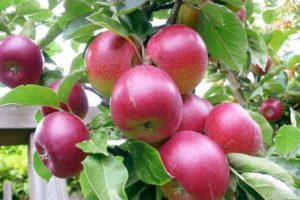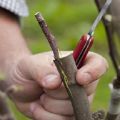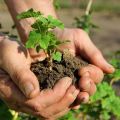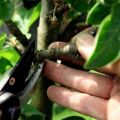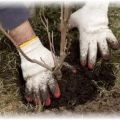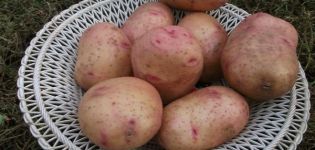Is it possible to grow an apple tree from a branch and when to start harvesting cuttings
Novice gardeners will be interested in learning how to grow an apple tree from a branch. This breeding method allows you to preserve all varietal characteristics. An aging fruit tree can be replaced with a young one using the air layering method.
Content
- 1 Is it possible to propagate an apple tree with branches
- 2 Taking a broken or cut branch?
- 3 Air layering or how to get seedlings from an old apple tree
- 4 When to start harvesting cuttings
- 5 How to prepare cuttings for propagation
- 6 Technology of rooting apple cuttings
- 7 How to properly dig an apple tree seedling
- 8 How is rooting of green cuttings
- 9 Further care
Is it possible to propagate an apple tree with branches
Experienced gardeners grow their own rooted seedlings from branches. Their survival rate is high - from 80 to 90%. To germinate the roots, choose annual shoots. They are bent to the ground, fixed with a hairpin in a shallow trench (10 cm), and sprinkled with soil.
Layering is done in early spring. In the summer, the soil is kept moist. A year later, at the beginning of summer, the seedlings are separated from the mother tree. They are transplanted to a permanent place in the fall.
Taking a broken or cut branch?
According to gardeners, a broken stalk takes root faster. The branch must be broken so that a "heel" remains in the lower part. To do this, first make a shallow incision on the selected shoot, then it is in this place that the branch is broken off.
To make more roots, the "heel" is split into several parts with a sharp knife. Before that, it is slightly shortened and cleaned.
Air layering or how to get seedlings from an old apple tree
In mid-March, a suitable fruit branch is found on an old apple tree. When choosing, adhere to the following requirements:
- the shoot for rooting is on the south side, well lit;
- there are no branches on it;
- age 2-3 years;
- the thickness is slightly more than 5 mm.
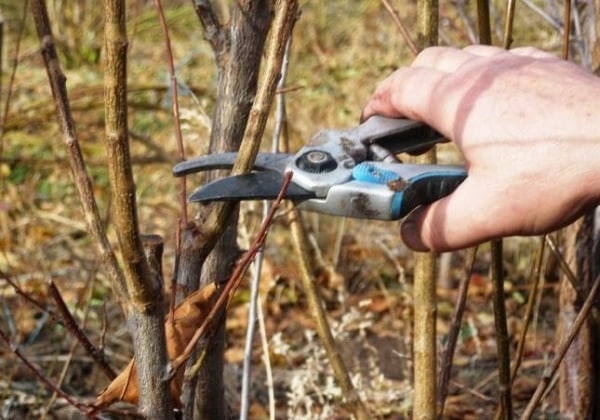
The selected branch is wrapped with transparent film. A 40 cm segment is closed. The lower and upper parts of the improvised sleeve are fixed with electrical tape. This design is used to soften the bark by June. In the last decade of June, the sleeve is removed. From the beginning of last year's growth, 10 cm recede down and an annular incision is made. Carefully remove 1 cm of bark. Several cuts are made at the top of the ring.
Over time, an outgrowth forms at the site of the wound, and roots will appear in the places of the notches. Certain conditions are required for their formation. At the first stage, the root formation process is stimulated with Kornevin. To do this, the wound is covered with cotton pads, wrapped with foil, the lower part is fixed with electrical tape, the upper part is left open. "Kornevin" is diluted according to the instructions, poured through the upper hole until the discs are completely moistened. The upper part of the film is fixed with electrical tape.
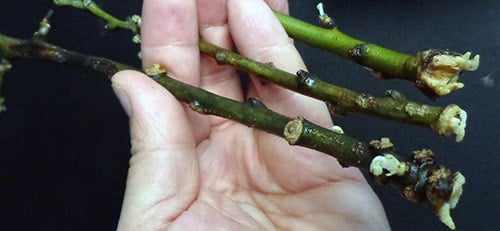
After a day, everything is removed, a structure is built around the cut from a plastic bottle and plastic film:
- cut off the bottom;
- make a longitudinal cut;
- put on a branch with the neck down;
- wrap the bottle with transparent film, forming a bag;
- the bottom is wrapped with electrical tape.
Sawdust, sphagnum or peat are poured into the container. Any moisture-absorbing substrate is suitable. It is well moisturized. The film is fixed with tape. Until the end of summer, the sawdust is moistened (every 2 days). The structure is sheltered from the sun. By the end of summer, roots or their beginnings appear at the layer.
When to start harvesting cuttings
Annual twigs are suitable for reproduction. Cuttings cut near the base take root better. When properly cut, the cut is just below the node (kidney).
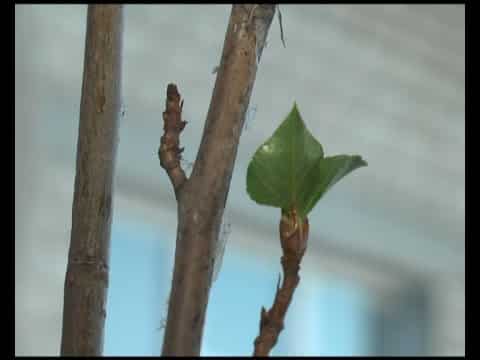
In the spring
For spring harvesting, cuttings are prepared in winter. The selected branch is slightly cracked, making it a closed fracture, the bark is not damaged. The damaged area is wrapped with electrical tape. Lignified branches are taken. Around the end of March, the winding is removed, the cutting is cut along the fracture line. By this time, the substances necessary for growth have accumulated in the damaged tissues. Cuttings prepared in this way root perfectly.
In autumn
Suitable branches are cut in late autumn. Store them in a snowdrift, refrigerator or in a cellar. In the spring, cuttings are prepared, they are germinated. Shoots are chosen lignified, without mechanical damage, healthy.
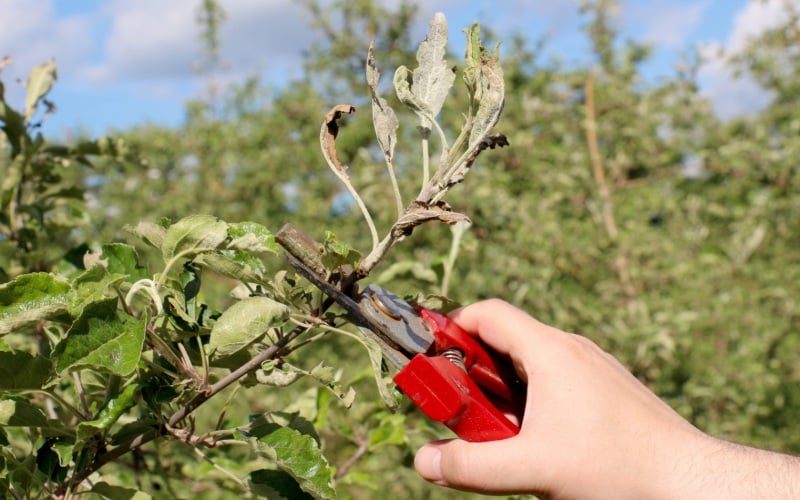
How to prepare cuttings for propagation
The cutting should have 2 to 3 internodes. The bottom sheet is removed. The remaining ones are shortened by ⅔ of the length. For 12 hours, put in a solution of a rooting stimulator, use:
- "Kornerost";
- Kornevin;
- "Zircon".
Seat selection
Own-rooted apple tree seedlings (3-4 years old) are transplanted into the garden. When choosing a place, they evaluate:
- degree of illumination;
- depth of groundwater (at least 2-2.5 meters);
- soil composition.
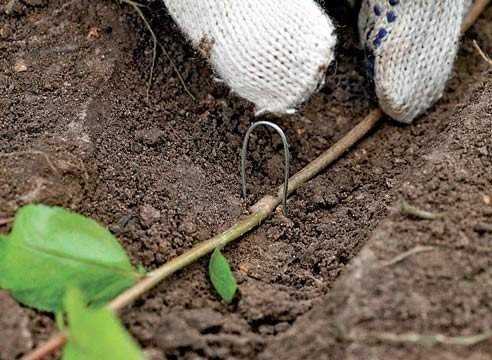
Soil preparation
A year before apple seedling transplant they prepare the soil for a permanent place. Add to clay soil:
- river sand;
- sawdust;
- compost or humus;
- slaked lime.
If the soil is sandy, add clay, humus, mineral fertilizers. For loam, humus and fertilizers (superphosphate, potassium sulfate) are enough.
Planting pit dimensions and depth
What size you need to make a planting hole is determined by the type of apple tree.
| Variety | Planting pit size |
| Tall | 0.8 * 1.2 m |
| Semi-dwarf | 0.5 * 1m |
| Dwarf | 0.4 * 0.9 m |
| Columnar | 0.5 * 0.5 m |
Technology of rooting apple cuttings
To get a rooted seedling from a branch, the apple tree cuttings are germinated. Use water or earth.
In water
Take a bottle made of dark plastic. Cut off the top. The height of the germination container should be slightly lower than the cuttings. A little water is poured (5 cm), it should cover the lower kidney. First, thickenings appear at the end, by the end of the 3rd week - roots. The sprouted stalk is planted in the ground when the length reaches 7 cm. To accelerate root formation, industrial or natural stimulants ("Kornevin", aloe juice) are added to the water.
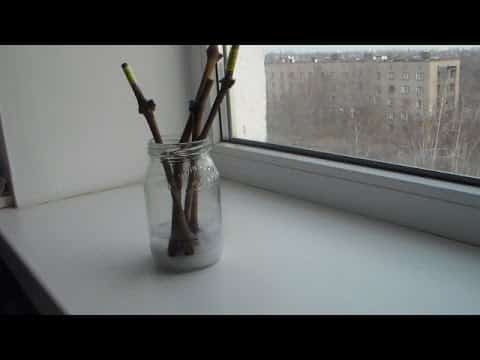
In the ground
In the spring, a layer of potting soil (20 cm) is poured into the container. It is prepared from peat, sand, black earth (1: 1: 1). Before planting the cuttings are placed in a solution of "Zircon" or "Kornevin". They are buried into the soil by 5 cm. The soil is moistened, the container is covered with a film. When warm weather comes, they take him outside. After the roots appear, the cuttings are transplanted to the garden bed.
How to properly dig an apple tree seedling
Saplings are added for the winter in order to plant them in a permanent place in the spring. Sequence of work:
- dig a trench 40 cm deep;
- on the south side, the side is made inclined;
- the seedling is placed in water for a day, laid obliquely in a ditch;
- the roots are sprinkled with earth in layers;
- each layer is poured abundantly with water;
- the trench is thrown with spruce branches, covered with spunbond.

How is rooting of green cuttings
Rooting of green cuttings is practiced from May to the end of August. Choose healthy branches, cut them in the morning. Use the middle part for the cutting. The finished cutting should have 3 buds:
- the lower cut is made directly under the kidney;
- the top is cut over the 3rd bud.
Roots will form from the lower bud. Prepared cuttings are planted in a separate bed. Sand is poured on it on top of the fertile soil in a layer of 4-5 cm. So that the moisture does not evaporate, they put arcs, cover the nursery with a film.
Further care
For the winter, young seedlings are sheltered from frost. A layer of mulch is poured, covered with spruce branches, a non-woven covering material. In the spring, the shelter is removed. Caring for self-rooted apple seedlings is reduced to watering, removing weeds, foliar and root dressing. After 2-3 years, the apple tree can be transplanted to a permanent place.
The result is influenced by the climate, apple variety, the choice of the breeding method, the accuracy of the operations performed, the degree of soil moisture.
